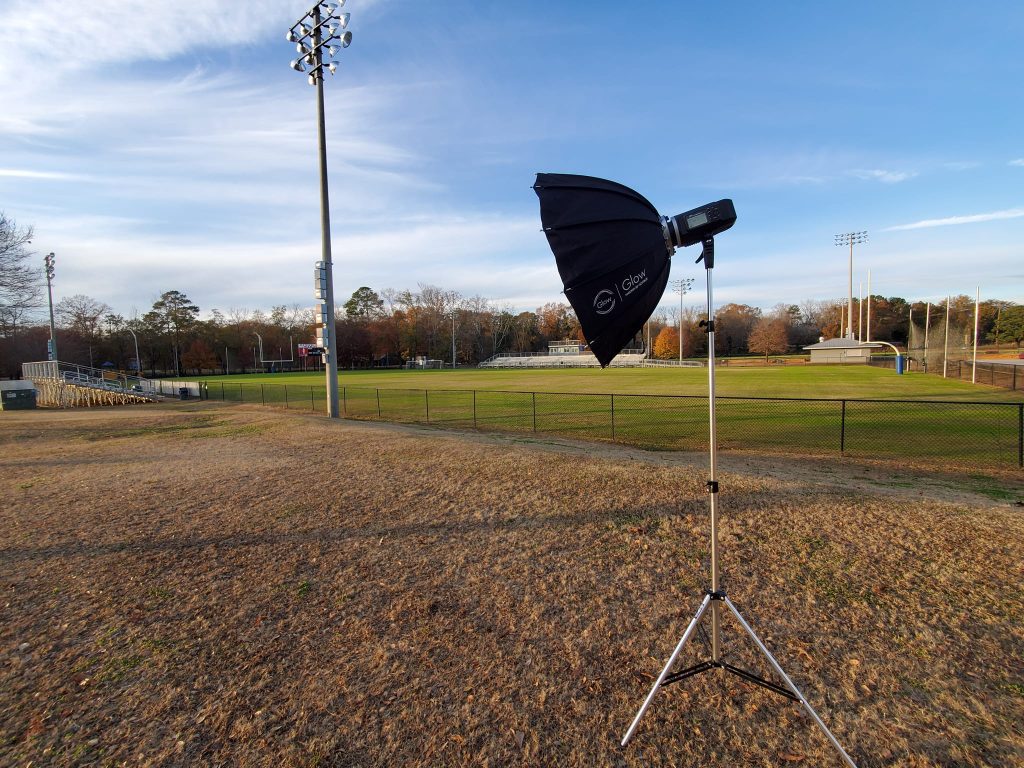Top Photo Settings [NIKON Z 9, NIKKOR Z 24-120mm f/4 S, Mode = Aperture Priority, ISO 2000, 1/8000, ƒ/4, (35mm = 100)]
Due to a mistake, I came across something I had not seen with other digital cameras.
After shooting inside with flash and balancing it with available light, I went outside for another setup. Unfortunately, I did not change the ISO from ISO 2000 to ISO 64. Due to this, I was shooting with a shutter speed of 1/8000.
The results you see in the top photo. It looks like Venetian blinds where a little light is getting through, and the existing light is still bright enough to light the rest of the face.

This is not the same as what you see with flickering lights that cause banding. Instead, mixing the flash duration with the 1/8000 created two exposures where the flash was hitting the subject.
There is no effect on the background because the flash wasn’t affecting it.
I used the Flashpoint XPlor 600 HSS TTL on a light stand and the 7” reflector with a diffuser. I was triggering it with my Godox X1. I was using TTL mode for the flash.
I was shooting in Aperture Priority, Auto ISO with the lowest setting turned to ISO 2000 due to shooting inside earlier. So the shutter speed would vary as the light changed.

Those photos shot at slower shutter speeds of 1/4000 didn’t have those lines.
This could easily be due to the Flashpoint lights and their flash duration in TTL mode.
This is the downside of not seeing your images on a large screen. Unfortunately, on the back of the camera, I did not think to zoom in to look for such an anomaly.

I immediately called my client and reshot those particular photos on my dime. Here is a couple of them here. I did change and use a softbox as well. I shot with the Nikon Z9, 85mm ƒ/1.8, with ISO 64, 1/125, ƒ/2.
Many other photos I have taken at 1/8000 and similar ISO have not had this issue. I hope to figure out what is causing this in the future, but I know that when I choose the lowest ISO possible, I have never seen those lines. Double-checking your settings is the takeaway from this unexpected failure.










